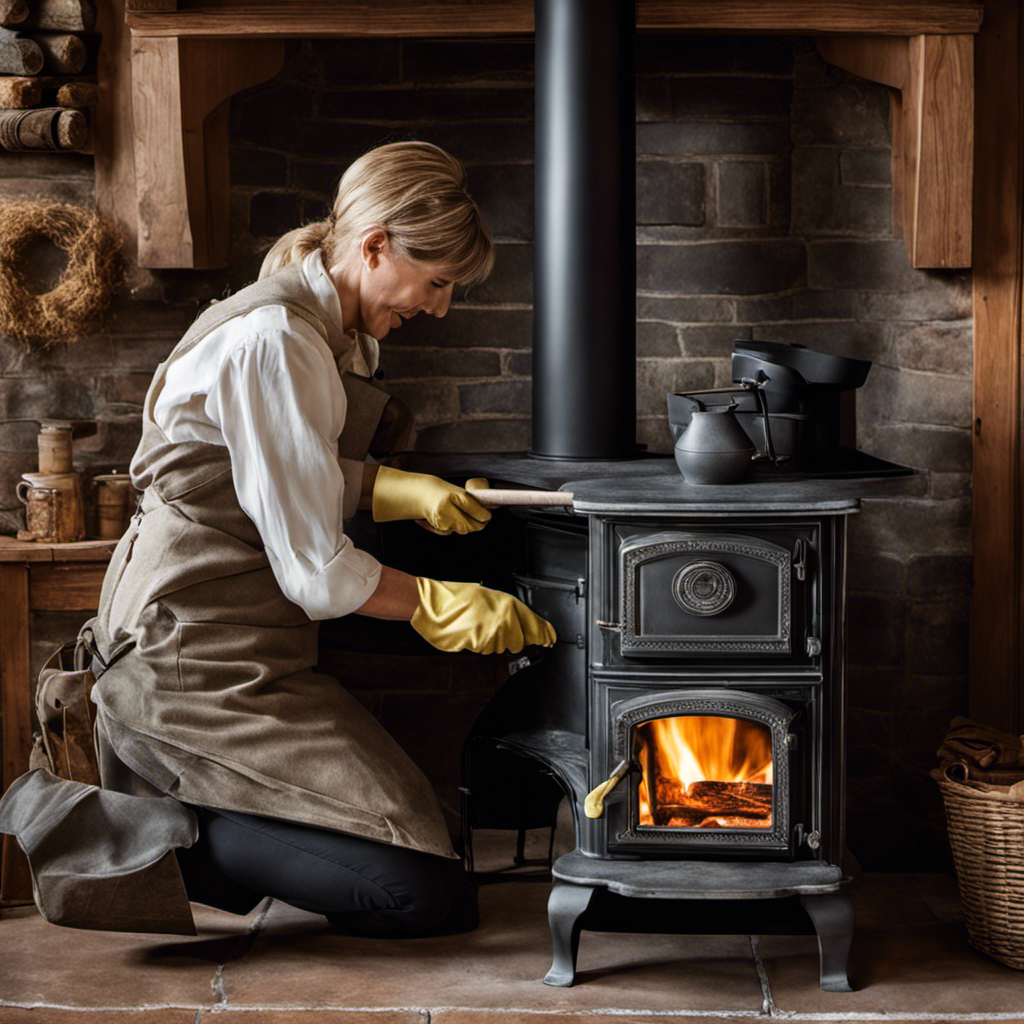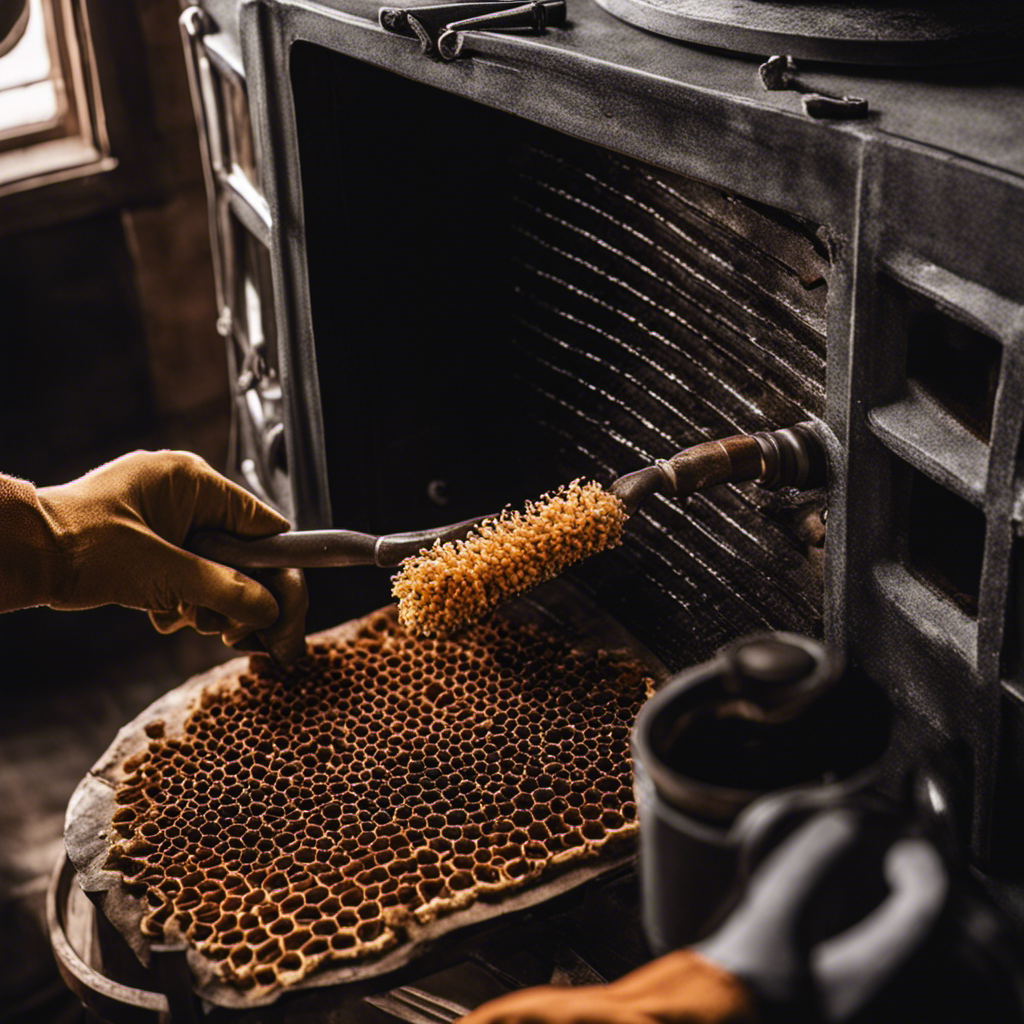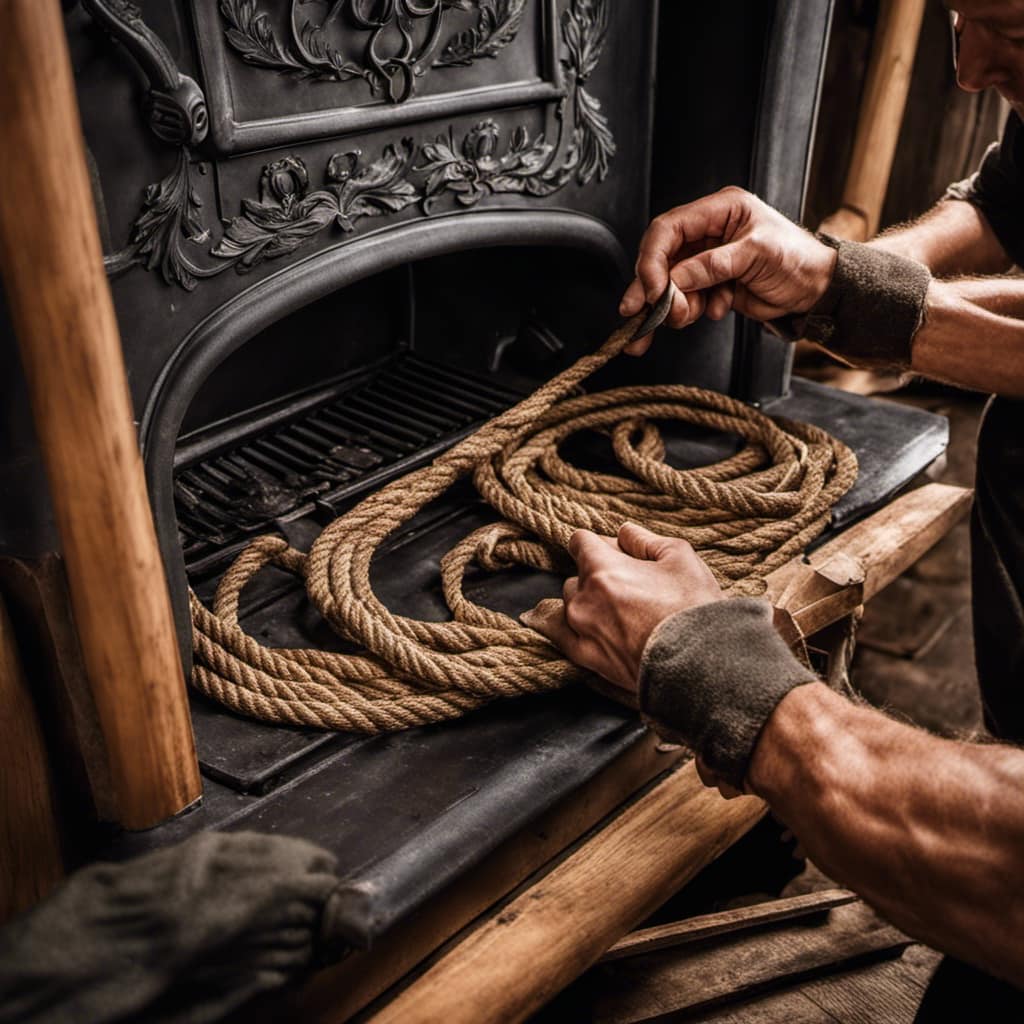
Let me demonstrate an easy way to cap your wood stove chimney.
No more worrying about drafts or debris entering your home.
With a few simple steps, you’ll have a secure and efficient wood stove pipe cap installed.
Get ready to enjoy a cozy and safe heating experience.
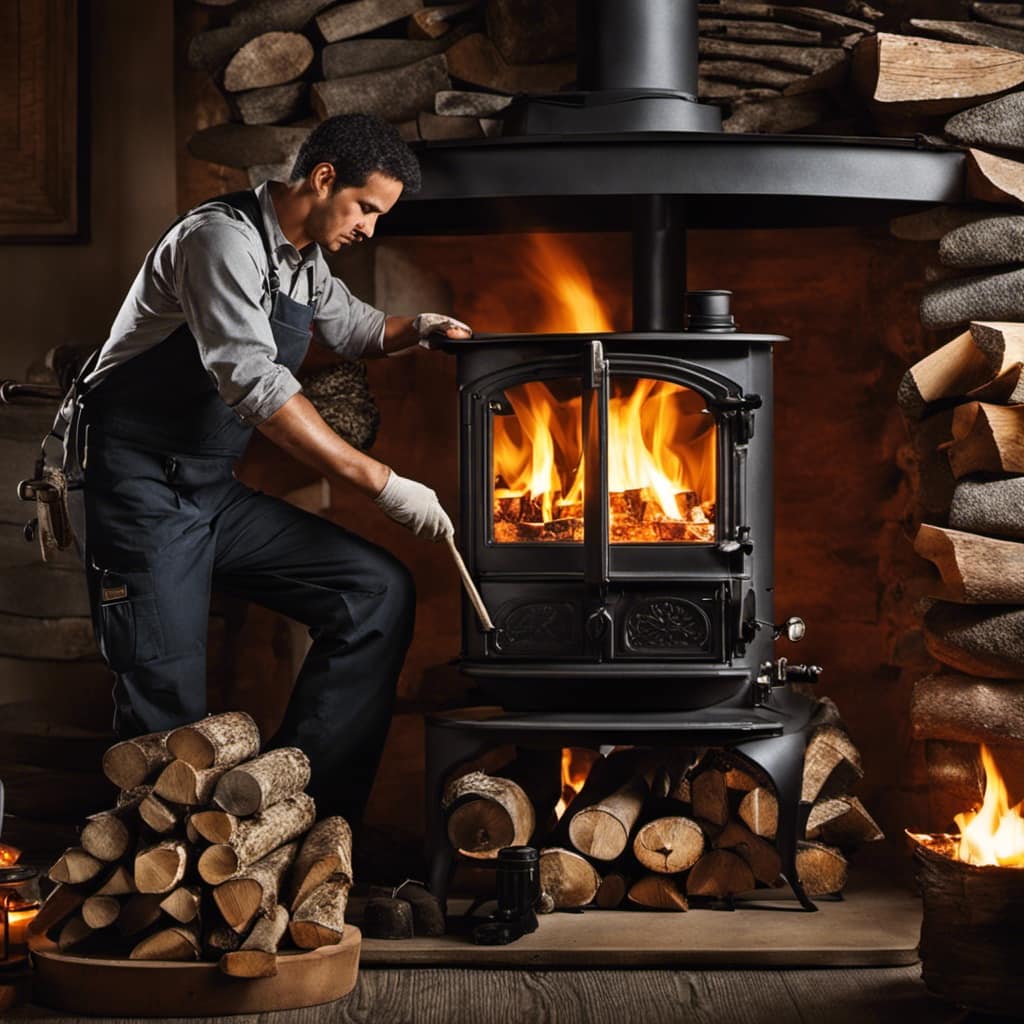
Let’s dive in and get started!
Key Takeaways
- There are different types of wood stove pipe caps, including metal caps, single flue caps, multi-flue caps, and spark arrestor caps.
- When choosing a wood stove pipe cap, factors to consider include matching the flue size with the cap size, using high-quality materials, considering maintenance requirements, and ensuring heat and corrosion resistance.
- The installation of a wood stove pipe cap involves securely tightening screws, choosing the correct cap size, cleaning the pipe before installation, placing the cap over the end of the pipe, and regularly inspecting and cleaning the cap for proper airflow.
- Capping your wood stove pipe offers benefits such as improving stove efficiency, reducing emissions, enhancing safety, preventing downdrafts and heat loss, and promoting cleaner air quality.
Different Types of Wood Stove Pipe Caps
I prefer using a metal cap for my wood stove pipe to prevent rain or debris from entering. There are various types of chimney caps available in the market today.
Some popular options include single flue caps, multi-flue caps, and spark arrestor caps. Single flue caps are designed to cover individual flues, while multi-flue caps can cover multiple flues at once. Spark arrestor caps are specifically designed to prevent sparks and embers from escaping the chimney.
When installing a wood stove pipe cap, it’s important to ensure that it fits securely and tightly. Proper installation will prevent any leaks or drafts. Additionally, it’s recommended to regularly inspect and clean the cap to remove any buildup of creosote or debris.
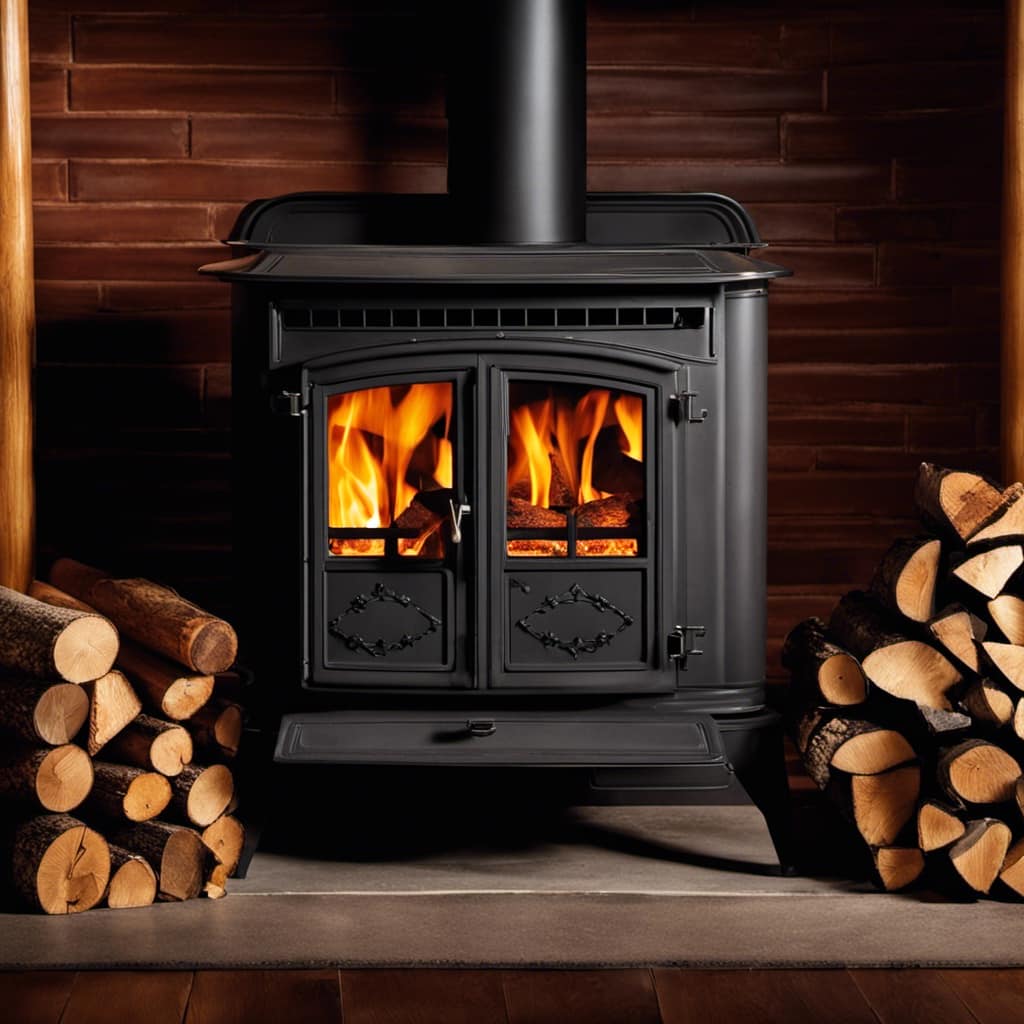
Factors to Consider When Choosing a Wood Stove Pipe Cap
One important factor to consider when choosing a wood stove pipe cap is the size of the flue it needs to cover. Selecting the right size cap ensures proper venting and prevents any potential issues with smoke or backdrafts.
Here are three key considerations when choosing a wood stove pipe cap:
-
Flue Size: Measure the diameter of your flue to determine the appropriate cap size. It’s crucial to select a cap that matches the flue’s dimensions to ensure a secure and effective fit.
-
Material and Durability: Look for a cap made of high-quality materials, such as stainless steel or cast iron, that can withstand high temperatures and resist corrosion. This ensures the longevity and reliability of the cap.
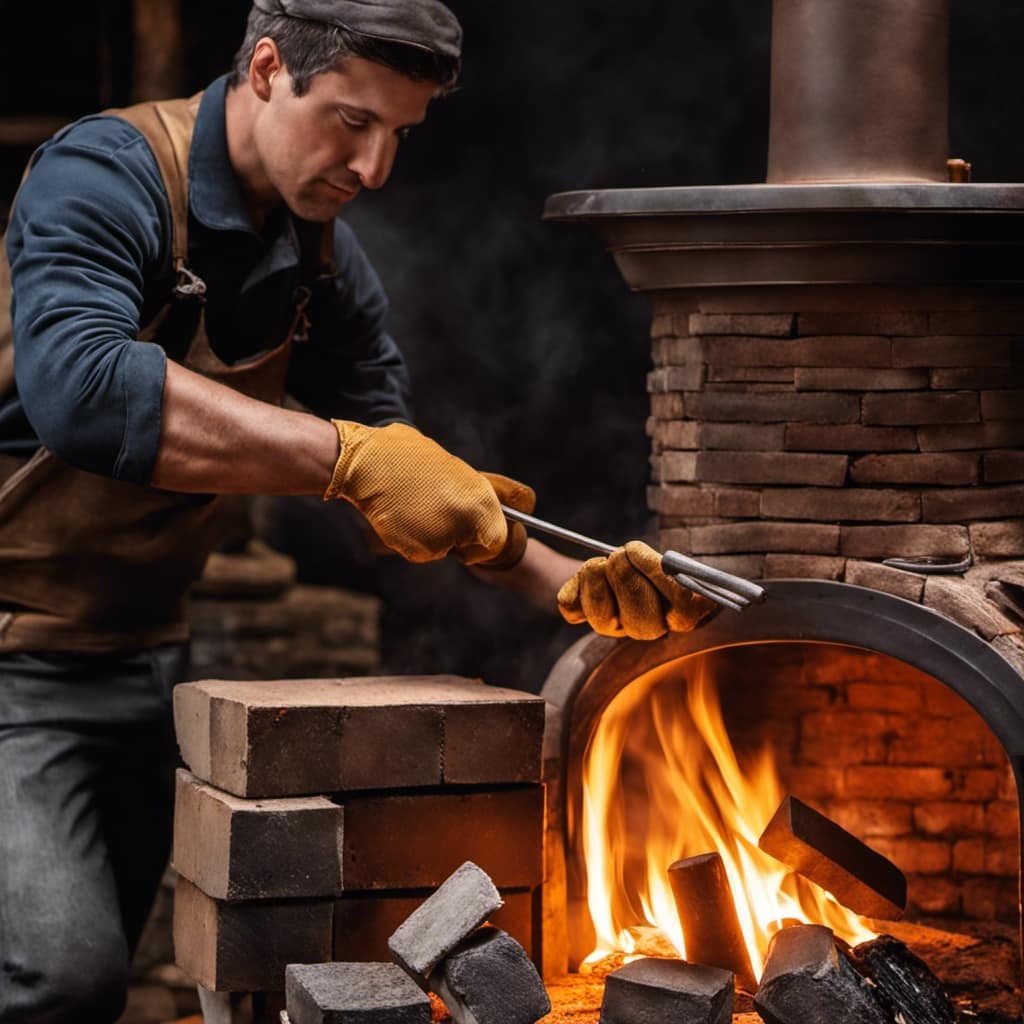
-
Maintenance Requirements: Consider the maintenance needs of the cap. Opt for a cap that’s easy to clean and maintain, as regular upkeep is essential for optimal performance and safety.
Proper maintenance for wood stove pipe caps and choosing the right size cap are crucial steps in ensuring the efficient and safe operation of your wood stove.
Now, let’s move on to a step-by-step guide to installing a wood stove pipe cap.
Step-by-Step Guide to Installing a Wood Stove Pipe Cap
Installing a wood stove pipe cap requires a wrench to securely tighten the screws in place.
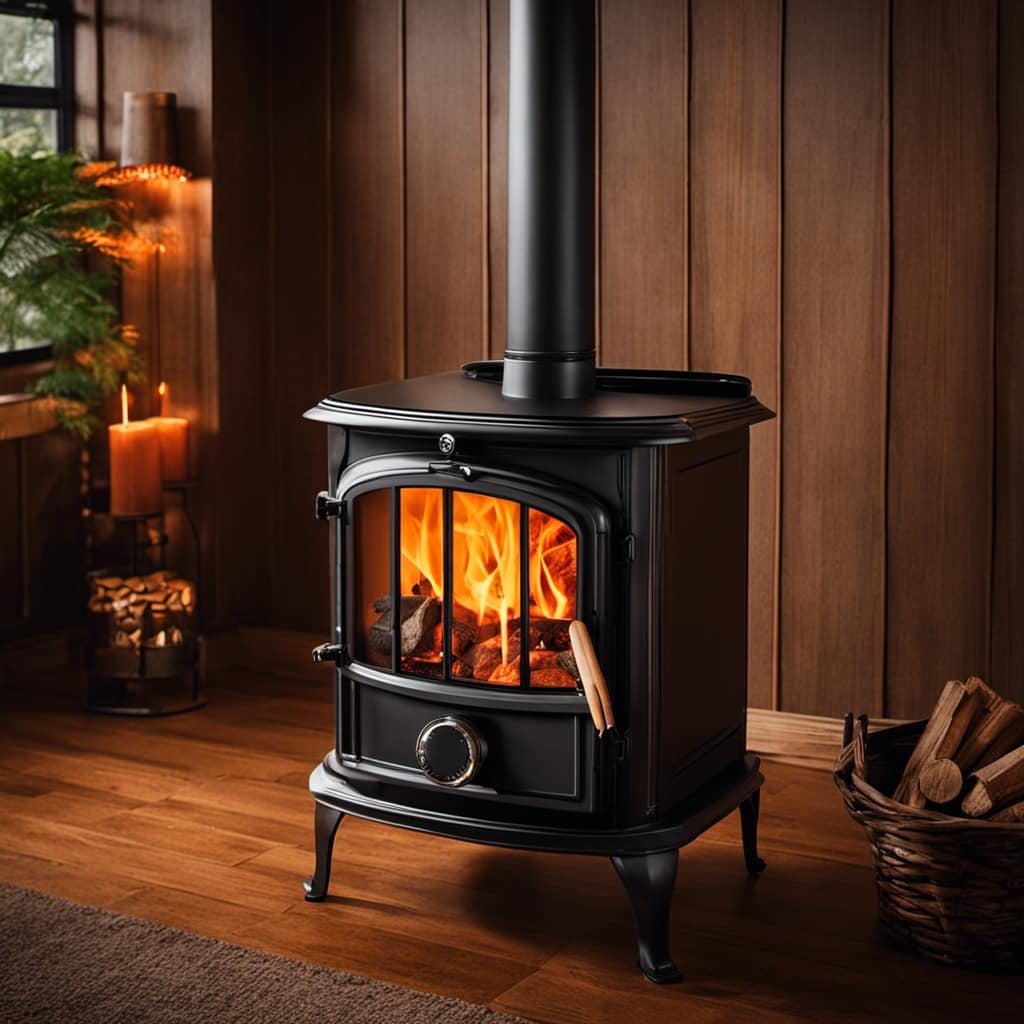
When it comes to installing a wood stove pipe cap, there are a few important installation tips to keep in mind.
First, make sure to choose a cap that’s the correct size for your stove pipe. Measure the diameter of your pipe carefully to ensure a proper fit.
Next, clean the pipe thoroughly before installation to remove any debris or buildup that may interfere with the cap’s installation.
Once you have the correct cap and a clean pipe, simply place the cap over the end of the pipe and use the wrench to tighten the screws securely.
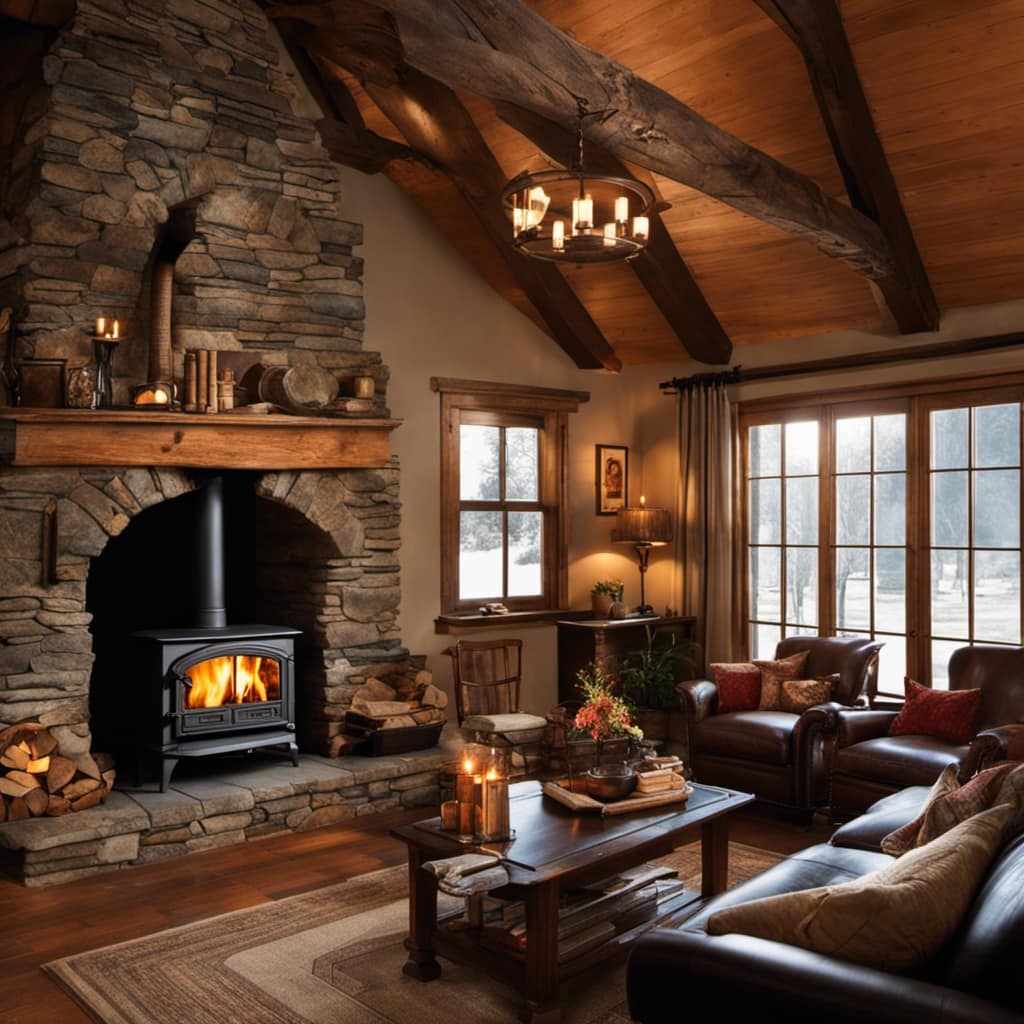
Regular maintenance is also essential for the longevity of your wood stove pipe cap. Be sure to inspect and clean the cap regularly, removing any debris or creosote buildup that may obstruct airflow.
Benefits of Capping Your Wood Stove Pipe
Capping your wood stove pipe can effectively prevent downdrafts and reduce heat loss. Here are three reasons why capping your wood stove pipe is beneficial:
-
Cost effective solutions: Installing a wood stove pipe cap is a cost-effective way to improve the efficiency of your wood stove. By preventing downdrafts, you can ensure that the heat generated by your wood stove stays in your home, reducing the need for additional heating sources and saving you money on heating bills.
-
Environmental advantages: Wood stove pipe caps help to reduce the emission of harmful pollutants into the environment. By preventing downdrafts, they ensure that the smoke and pollutants from your wood stove are properly vented outside, promoting cleaner air quality both inside and outside of your home.

-
Increased safety: Capping your wood stove pipe adds an extra layer of safety by preventing sparks and embers from escaping the pipe and potentially causing a fire hazard.
Capping your wood stove pipe offers several benefits, but it’s important to be aware of common issues that may arise. Transitioning into the next section, let’s explore troubleshooting tips for wood stove pipe caps.
Troubleshooting Common Issues With Wood Stove Pipe Caps
Since I’ve been experiencing some issues with my wood stove pipe cap, I wanted to find some troubleshooting tips to address these problems.
It’s important to address common problems with wood stove pipe caps as they can impact the overall efficiency and safety of your wood stove.
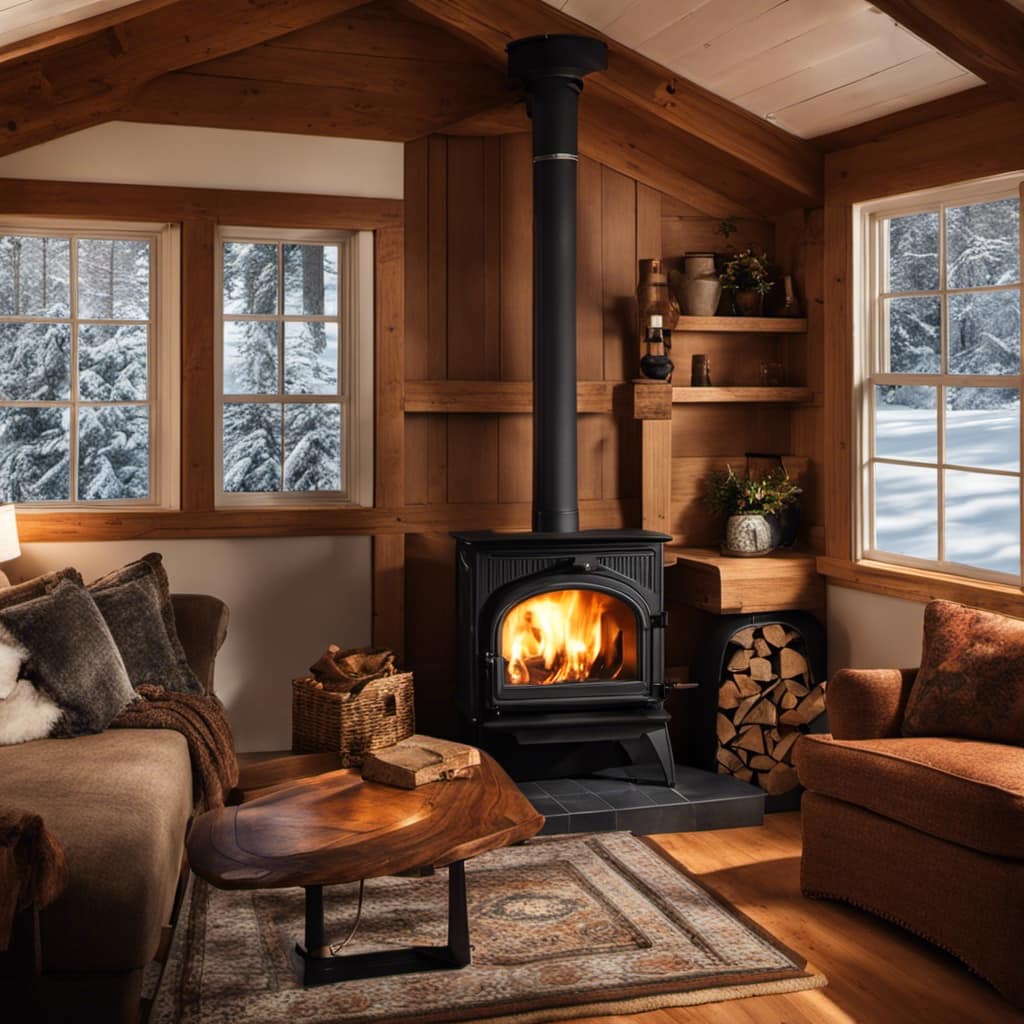
One common issue is a loose or damaged cap, which can result in smoke leakage and reduced draft. To fix this, ensure that the cap is securely attached and replace any damaged parts.
Another problem is creosote buildup on the cap, which can be a fire hazard. Regular maintenance is crucial to prevent this. Clean the cap regularly using a chimney brush or a wire brush.
Additionally, check for any obstructions or debris that may be blocking the cap’s functionality.
Frequently Asked Questions
How Often Should I Clean My Wood Stove Pipe Cap?
I inspect my wood stove pipe cap regularly to ensure it’s in good condition. Signs of damage or wear include rust, cracks, or loose fittings. It’s important to address any issues promptly to maintain safety and efficiency.
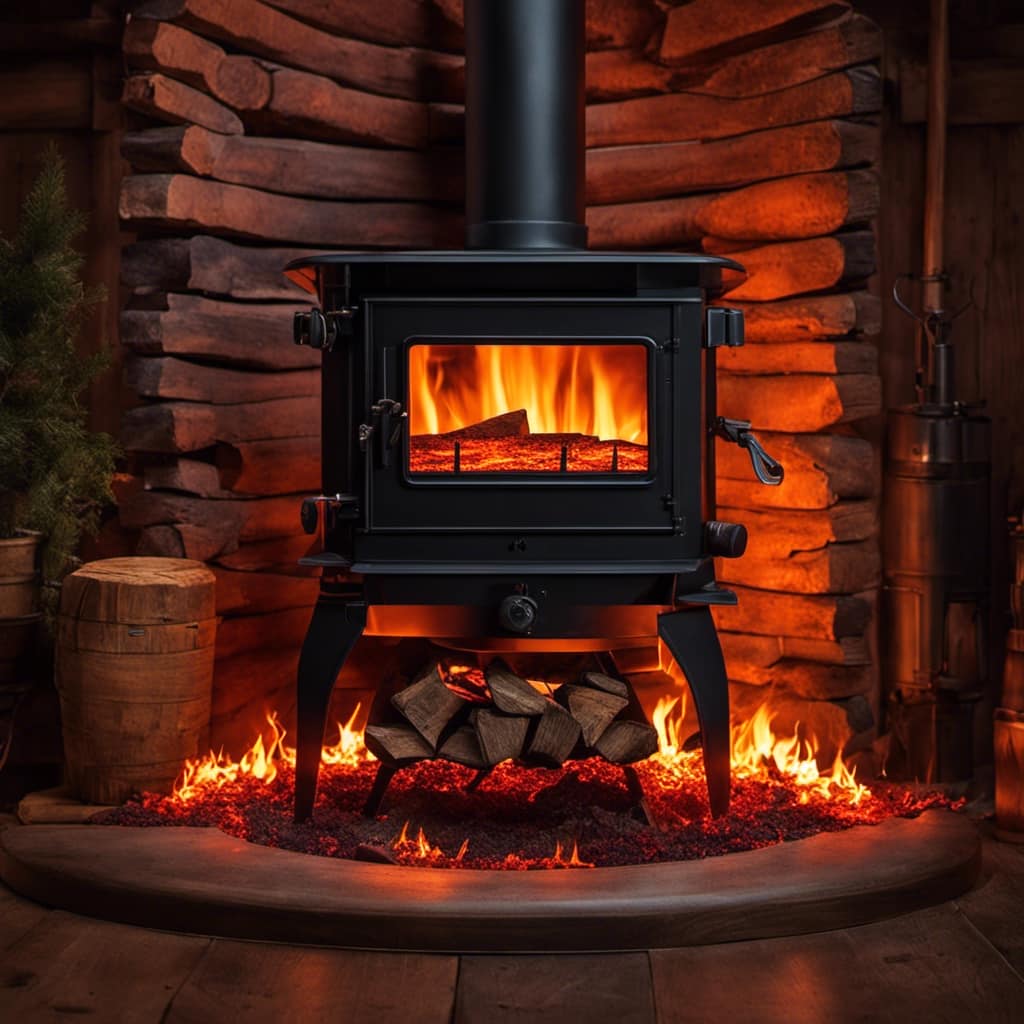
Can I Use Any Type of Cap on My Wood Stove Pipe?
I can choose from a variety of wood stove pipe caps. To find the right one, I should consider factors like material, size, and design. It’s important to ensure a proper fit for safety and efficiency.
Are There Any Safety Precautions I Should Take When Installing a Wood Stove Pipe Cap?
When installing a wood stove pipe cap, it is crucial to prioritize safety. Some common mistakes to avoid include not properly securing the cap, using inadequate materials, and neglecting to clean the chimney beforehand.
What Are the Signs That My Wood Stove Pipe Cap Needs to Be Replaced?
When a wood stove pipe cap shows signs of damage like rust, cracks, or loose fittings, it needs to be replaced. To replace it, carefully remove the old cap and install a new one following the manufacturer’s instructions.
Can I Use a Wood Stove Pipe Cap to Control the Draft in My Stove?
Using a wood stove pipe cap is a great way to control the draft in your stove. It helps with wood stove pipe maintenance and offers benefits like increased efficiency and reduced heat loss.

Conclusion
In conclusion, capping your wood stove pipe is a simple but important step to ensure the safety and efficiency of your wood stove. By choosing the right type of cap and following the installation guide, you can prevent debris, animals, and rain from entering your pipe, while also improving draft and preventing backflow.
So don’t hesitate to cap your wood stove pipe and enjoy a safer and more efficient heating experience. Remember, an ounce of prevention is worth a pound of cure!
Growing up surrounded by the vast beauty of nature, Sierra was always drawn to the call of the wild. While others sought the comfort of the familiar, she ventured out, embracing the unpredictable and finding stories in the heartbeat of nature.
At the epicenter of every remarkable venture lies a dynamic team—a fusion of diverse talents, visions, and passions. The essence of Best Small Wood Stoves is crafted and refined by such a trio: Sierra, Logan, and Terra. Their collective expertise has transformed the platform into a leading authority on small wood stoves, radiating warmth and knowledge in equal measure.





